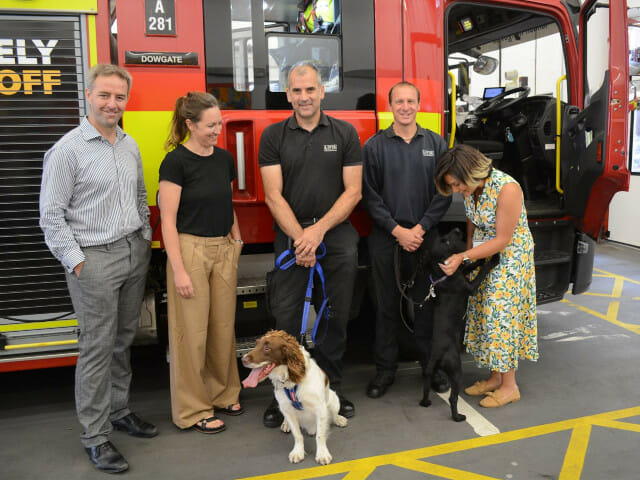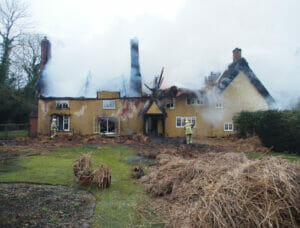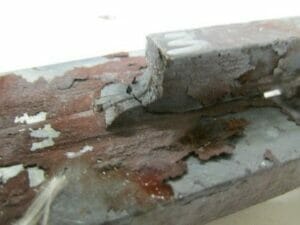Hawkins fire investigators David Reid Rowland and Claire Mann, and forensic architect Niralee Casson, recently met members of London Fire Brigade’s Fire Investigation Team and their two exuberant accelerant detection dogs, Simba (6 years) and Smokey (14 months).
Simba and Smokey are handled by London Fire Brigade’s investigators Anton Keach and Darren Woodhams and are based at Dowgate Fire Station. As well as investigating fires for the London Fire Brigade, they also assist other Fire and Rescue and Police Services in detecting flammable liquids that could have been used by arsonists to deliberately set a fire. They are trained to detect minuscule scents of eleven different liquids, but do not indicate which of these scents they have found. “It’s not one bark for petrol and two for diesel,” Anton laughed. With their 300 million olfactory receptors, Simba and Smokey’s noses can be up to 2,000 times more accurate than humans at detecting low levels of an accelerant liquid. They are also more sensitive than most portable electronic devices such as FID (flame ionisation detectors) and are able to search large areas very quickly, identifying both the primary accelerant application and secondary areas where arsonists have discarded objects such as containers or clothing. They undergo continuous training and assessment to ensure their indications are reliable.
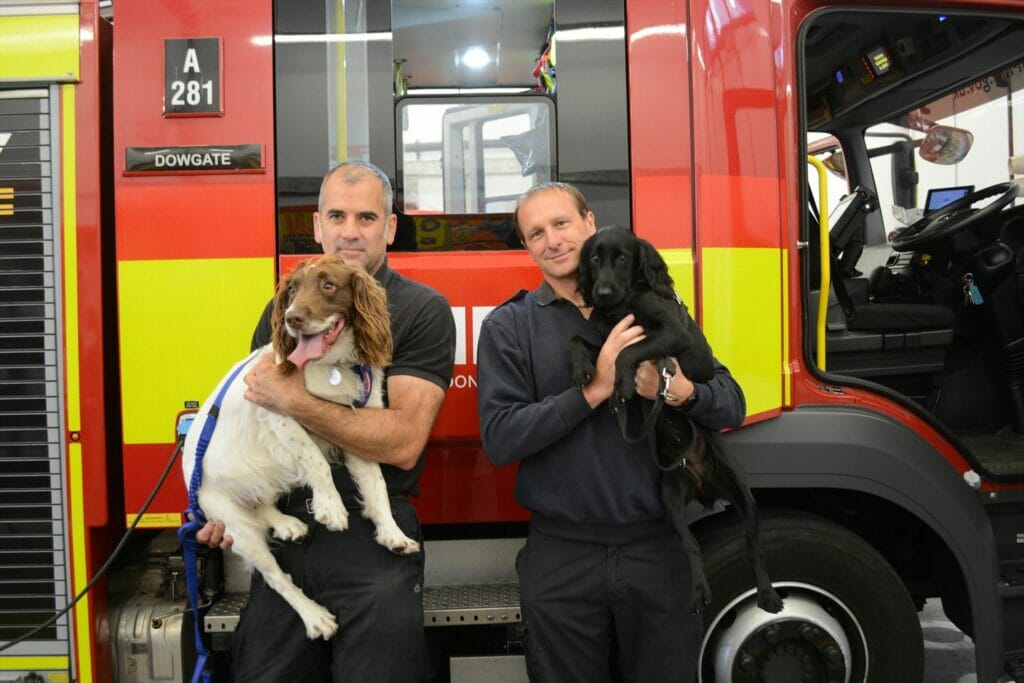
Anton and Darren demonstrated Simba and Smokey’s search prowess using pre-prepared cannisters, only one of which contained an identified accelerant. The dogs indicate the presence of an accelerant in different ways, such as stopping next to the target of their search, then either resting their head or paw on top, circling around it, or barking for their handler’s approval. Whichever their particular way of indicating, it is always clear when they have identified an accelerant. After the dogs correctly identified the canister which contained the accelerant, they were rewarded with a ball and praise from their handler. “You can see the dogs are far more excited conducting the search than achieving the find,” Anton said. Anton and Darren then placed samples throughout the yard of the fire station in discreet places and both Simba and Smokey quickly located them. They also explained the importance of the dogs not being confused by other objects that might be found at a fire scene. They put out a number of burnt objects such as carpet samples and showed that the dogs did not react to them.
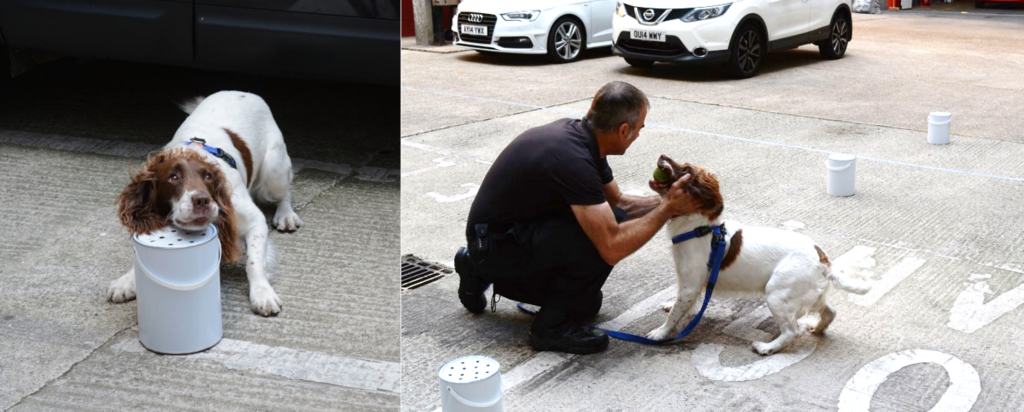
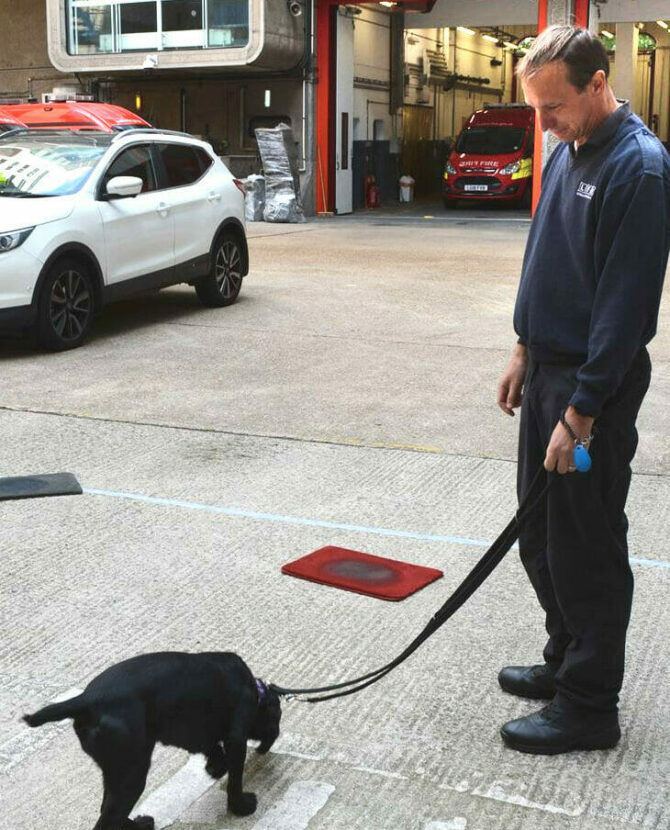
One difficulty that working with dogs presents, is the risk that any accelerants that are on a scene can be transferred by them to another scene, resulting in it becoming contaminated. This risk is mitigated by a number of methods, including the use of paw coverings. These are protective boots that the dogs wear to protect their paws from sharps, glass and fire debris and which also mitigate potential scene contamination. It should also be noted that the dogs are only ever deployed in cold scene examinations. Hawkins is sponsoring Anton in carrying out research which is being conducted through Angela Ruskin University, to support his dissertation into the risk of accelerant contamination and the likelihood of cross-contamination.
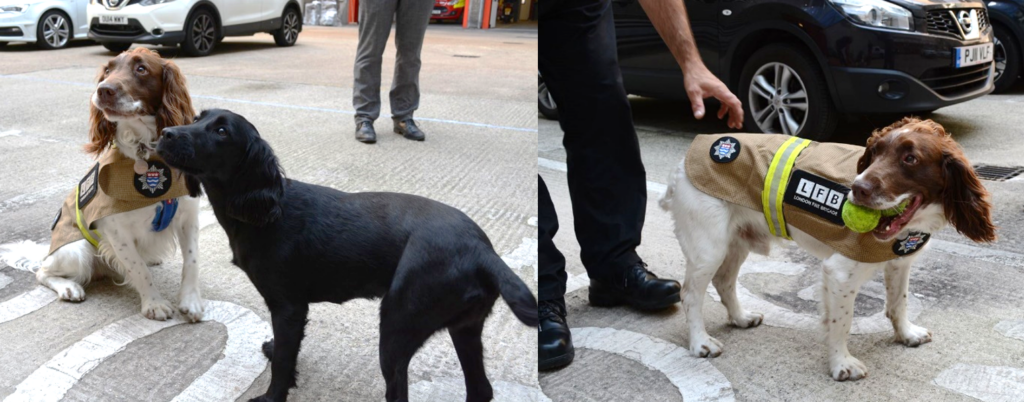
The Hawkins London Office colleagues were all delighted to meet Anton, Darren, Simba and Smokey, and to have this learning opportunity. We would like to thank London Fire Brigade for the invitation and we look forward to meeting Simba and Smokey on future investigations.
